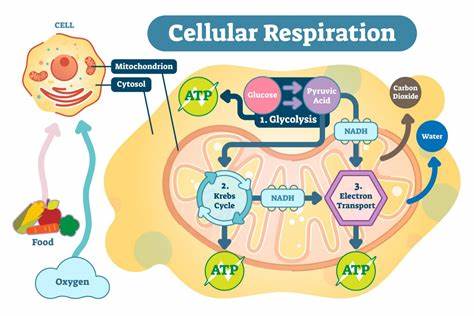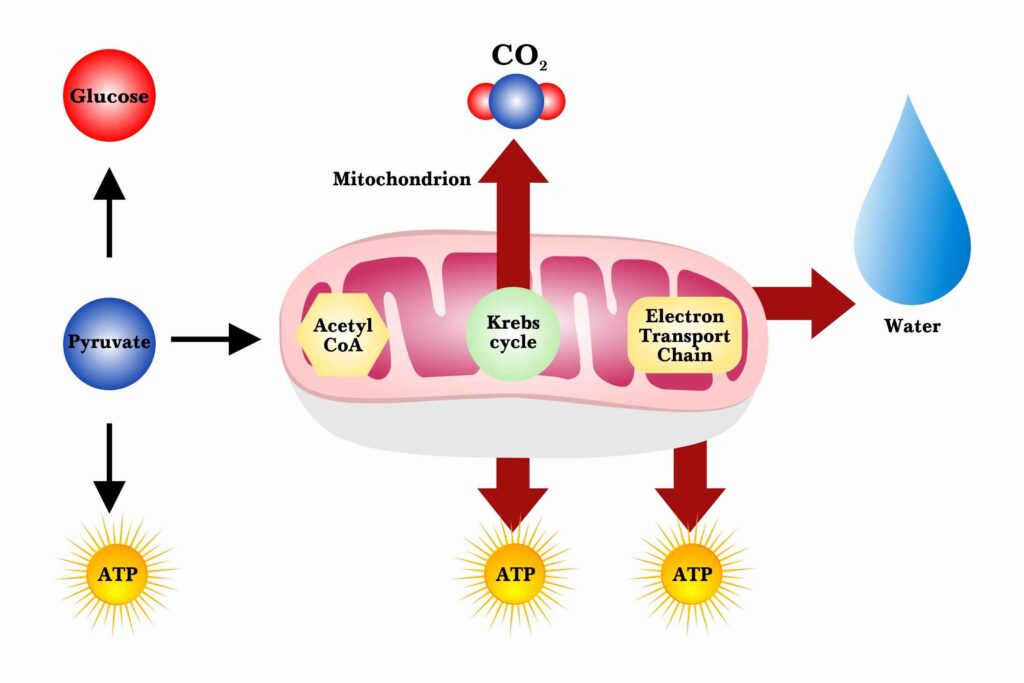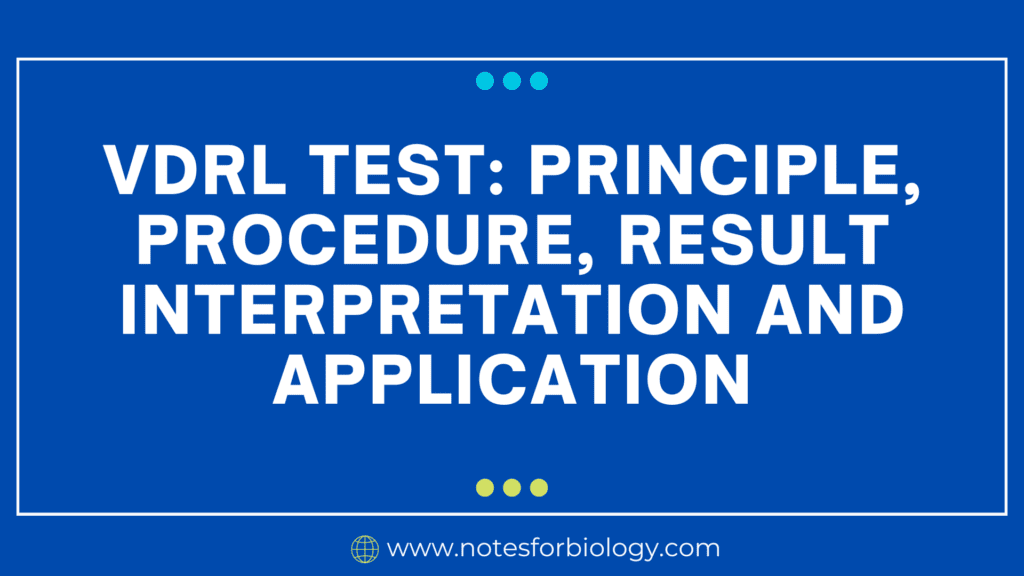1. Introduction
Cellular respiration is a biological process in which cells break down glucose in the presence or absence of oxygen to produce ATP (adenosine triphosphate), along with carbon dioxide and water as by-products. All living organisms need energy to perform their daily functions like moving, growing, repairing damage, and staying alive. This energy comes from a process called cellular respiration. It is how cells break down food—usually glucose—and convert it into ATP, the energy currency of the cell.
Cellular respiration happens in most cells of the body, especially in the mitochondria, often called the powerhouse of the cell. The process is like “burning” food, but instead of using fire, it uses a series of chemical reactions to slowly release energy.
Table of Contents
2. What is Cellular Respiration?
Cellular respiration is a biological process in which cells break down glucose in the presence or absence of oxygen to produce ATP (adenosine triphosphate), along with carbon dioxide and water as by-products.

It’s the opposite of photosynthesis. Plants store energy in glucose during photosynthesis, and cells release that energy during respiration.
3. Overall Equation of Cellular Respiration
The complete balanced chemical equation for aerobic (oxygen-requiring) respiration is:
C₆H₁₂O₆ + 6O₂ → 6CO₂ + 6H₂O + energy (ATP)
In words:
Glucose + Oxygen → Carbon dioxide + Water + Energy
This means that one molecule of glucose combines with six molecules of oxygen to produce six molecules of carbon dioxide, six molecules of water, and energy in the form of ATP.
4. Types of Cellular Respiration
There are two main types of cellular respiration:
A. Aerobic Respiration

- Requires oxygen
- Most efficient type
- Occurs in most plants, animals, fungi, and many bacteria
- Produces up to 38 ATP molecules per glucose
B. Anaerobic Respiration

- Occurs without oxygen
- Less efficient
- Happens in some bacteria, yeast, and muscle cells during heavy exercise
- Produces only 2 ATP per glucose
- Produces lactic acid or alcohol as by-products
5. Steps of Aerobic Cellular Respiration
Aerobic respiration takes place in four major stages:
Step 1: Glycolysis
- Location: Cytoplasm
- Oxygen required? No
- What happens:
- Glucose (6-carbon) is split into 2 molecules of pyruvate (3-carbon each)
- Produces 2 ATP (net gain)
- Produces 2 NADH (energy-carrying molecules)
Step 2: Pyruvate Oxidation
- Location: Mitochondrial matrix
- Oxygen required? Yes
- What happens:
- Each pyruvate is converted into acetyl-CoA
- Releases CO₂
- Produces 1 NADH per pyruvate
Step 3: Krebs Cycle (Citric Acid Cycle)
- Location: Mitochondrial matrix
- Oxygen required? Yes
- What happens:
- Acetyl-CoA enters the cycle
- Produces 2 ATP, 6 NADH, 2 FADH₂, and 4 CO₂ (from 2 acetyl-CoA)
Step 4: Electron Transport Chain (ETC) and Oxidative Phosphorylation
- Location: Inner mitochondrial membrane
- Oxygen required? Yes
- What happens:
- Electrons from NADH and FADH₂ move through protein chains
- Energy is used to pump protons and make ATP using ATP synthase
- Oxygen is the final electron acceptor → forms water
- Produces around 34 ATP
Total ATP from one glucose molecule = 38 ATP (in ideal conditions)
- 2 ATP (Glycolysis)
- 2 ATP (Krebs Cycle)
- ~34 ATP (ETC)
6. Anaerobic Respiration (Fermentation)
When oxygen is not available, cells switch to anaerobic respiration. It is less efficient but allows cells to keep producing some energy.
A. Lactic Acid Fermentation
- Occurs in: Human muscle cells and some bacteria
- Process:
Glucose → Pyruvate → Lactic acid + 2 ATP - Effect: Causes muscle fatigue and soreness after intense exercise
B. Alcoholic Fermentation
- Occurs in: Yeast and some types of fungi
- Process:
Glucose → Pyruvate → Ethanol + CO₂ + 2 ATP - Use: Bread rising, brewing beer and wine
7. Comparison Table: Aerobic vs Anaerobic Respiration
| Feature | Aerobic Respiration | Anaerobic Respiration |
|---|---|---|
| Oxygen Required | Yes | No |
| Location in Cell | Mitochondria | Cytoplasm |
| ATP Yield | Up to 38 ATP | 2 ATP |
| End Products | CO₂ and H₂O | Lactic acid or ethanol + CO₂ |
| Organisms | Plants, animals, fungi | Bacteria, yeast, muscle cells |
| Efficiency | High | Low |
8. Products of Cellular Respiration
A. ATP (Adenosine Triphosphate)
- The main product
- Used for all energy-requiring activities in the cell like movement, transport, growth, and repair
B. Carbon Dioxide (CO₂)
- A waste gas
- Removed from the body through exhalation
C. Water (H₂O)
Can be used by cells or removed through sweating, breathing, and urine
9. Importance of Cellular Respiration
- Provides energy (ATP) for survival
- Maintains body functions such as breathing, heartbeat, and thinking
- Supports muscle contraction, digestion, and repair of tissues
- Prevents buildup of waste products
- Essential for life—without respiration, cells would die
10. Cellular Respiration and Photosynthesis
These two processes are closely linked:
| Photosynthesis | Cellular Respiration |
|---|---|
| Happens in plants (chloroplast) | Happens in all cells (mitochondria) |
| Converts CO₂ and H₂O → glucose + O₂ | Converts glucose + O₂ → CO₂ + H₂O + ATP |
| Stores energy | Releases energy |
| Requires sunlight | Does not require sunlight |
Photosynthesis makes the food (glucose), and respiration breaks it down for energy.
11. Disorders and Health Impact
When respiration doesn’t work properly:
- Cells don’t get enough energy
- Muscles can become weak
- Lactic acid buildup causes fatigue
- Some diseases (e.g., mitochondrial disorders) affect respiration directly
12. Summary
- Cellular respiration is how cells release energy from food
- It can happen with oxygen (aerobic) or without oxygen (anaerobic)
- Main steps include glycolysis, pyruvate oxidation, Krebs cycle, and electron transport chain
- Produces ATP, the energy molecule of life
- Helps all organisms stay alive and perform essential functions
FREQUENTLY ASKED QUESTIONS
What is cellular respiration?
Cellular respiration is the process by which cells break down glucose (sugar) to release energy in the form of ATP, which is used to power all the cell’s activities.
What are the main types of cellular respiration?
There are two types:
Aerobic respiration (uses oxygen and produces more energy)
Anaerobic respiration (does not use oxygen and produces less energy)
Where does cellular respiration take place in the cell?
Glycolysis happens in the cytoplasm.
The rest of the steps (Krebs cycle and electron transport chain) happen in the mitochondria.
Related Articles




